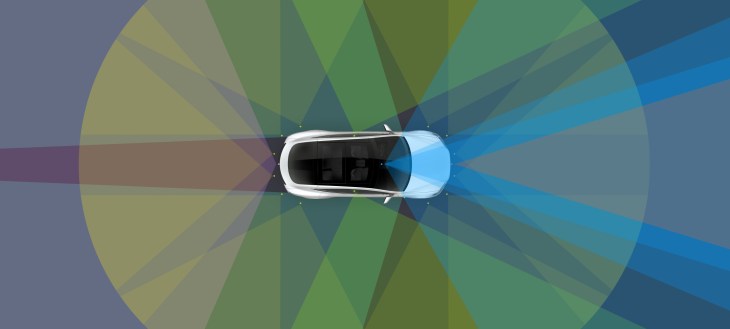Elon Musk’s vision of autonomous driving differs from a lot of Tesla’s competitors in that he’s been adamant that LiDAR isn’t a core component of his approach. It’s a stance that provokes a lot of debate among experts in the field, many of whom, including former Tesla employees, disagree that full autonomy can be managed with a sensor load out that doesn’t include LiDAR.
“We have to solve passive optical image recognition extremely well in order to be able to drive in any environment and in any conditions,” Musk said on today’s Tesla quarterly earnings call. “At the point where you’ve solved it really well, what is the point in having active optical, which means LiDAR. In my view, it’s a crutch […] that will drive companies towards a hard corner that’s hard to get out of.”
Musk said that they’d want to do active photon generation in the radar range because that’s something that can see through small occlusions, so it’s not possible to do it from visual info and apply machine learning to work out variances in lighting conditions, etc. He said that he “finds it quite puzzling that companies would choose to do active photon generation in the wrong wavelength,” however, meaning working with the laser spectrum, since it’s very pricey.
In fact, Musk called it “expensive, ugly and unnecessary,” and added that even though he’s still clearly set against its inclusion in Tesla’s autopilot designs, it’s still possible his own bet in this area isn’t 100 perhaps correct.
“Perhaps I’m wrong, in which case I’ll look like a fool,” he said. “But I’m quite certain that I’m not.”
The strongest argument in Musk’s favor might be that the best current drivers also lack LiDAR arrays — humans, which depend primarily on standard passive optical sensing when doing their own driving.
